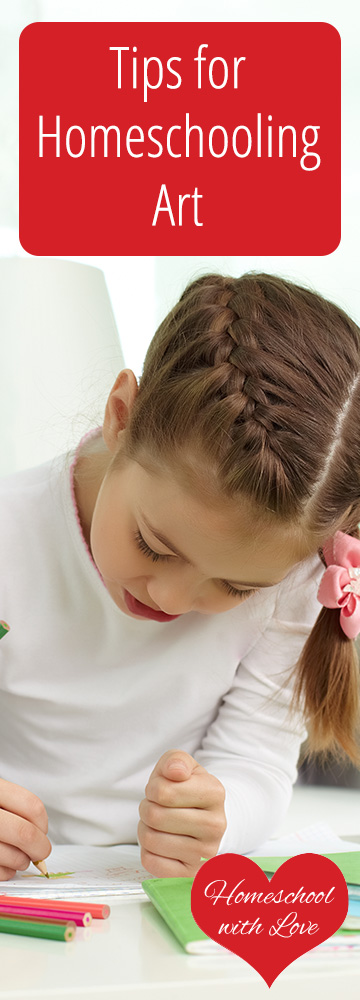
Art is all about creativity.
When a child is given some art supplies and free rein, they can create some amazing works.
On the other hand, it is good to have some guided practice as well so that they can learn from the pros.
Here are some tips for homeschooling art using these methods.
Tips for Homeschooling Art
Tool Training
If you don’t know how to use a tool, you aren’t going to be as successful with it, right? Art uses a lot of tools including pencil, brush, crayon, and clay. When your child first uses one of these tools, it is probably a good idea to give him a few tips and techniques first. For example, if your child is drawing with pencil, show her how she can use the tip to draw or the side to shade. When using watercolor, you could demonstrate the different effects that you can get by using a dry brush as opposed to a wet one. Don’t give her too many techniques at once though. It will overwhelm her. Start with a few simple ones. You can build from there later.
Guided Practice
When you want to learn a new skill, what do you do? You find a person or a book to show you how it’s done, right? You model someone who is already good at it, then you take your skill and create with it. The same is true for children. Guided practice through art lessons enables your child to learn the concepts and skills necessary for later creativity. That’s why it’s useful to have art books, programs, and/or curriculum which show kids the principles, elements, and techniques important to art. Having structured lessons such as these are a definite must for an art class.
Time for Free Exploration
A green horse? A blue tree? Some may call that insanity, but I call it creativity. A child’s imagination is a beautiful thing. It’s wonderful to encourage it whenever you can. Sometimes you will need to dictate how the child uses color for a particular lesson. If it relates to the objectives of the lesson, that’s OK. But other times, it doesn’t matter, so allow your child some freedom with their creativity.
Try to allow some free time for your kids to explore art by doing projects of their own choosing. I used to give my kids a conglomerate of craft materials like colored feathers, pipe cleaners, pom-poms, and yarn and let them create whatever they wanted. They loved it. They made some beautiful, unique projects. Better yet. They had a good time. It cultivated an interest in art for them that otherwise might have been lost with too much structure. I now have two daughters who create digital art for websites such as this one thanks to their love of art.
Finally, I recommend using a lot of positive feedback with your child when he does art. Art isn’t like math. It doesn’t need to be precise. Let them make mistakes. Mistakes can often become incredible works of art in the end.
Do you have tips for homeschooling art? I’d love to hear them in the comment section.







